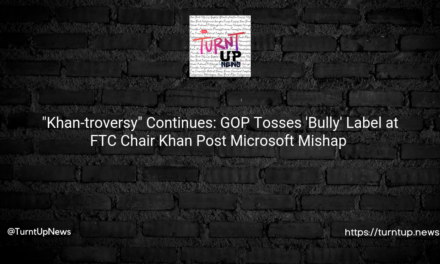🗳️ Raising the Bar or Slashing Democracy? The 60% Question in Ohio’s Special Election! 🎉
TL:DR; Ohio is turning the voting game on its head with Issue 1, a controversial ballot measure. If passed, it’ll make it harder to amend the state constitution, requiring 60% approval instead of the simple majority that’s been around since 1912. The idea? Keep wealthy outsiders from tampering with Ohio’s laws. But does this make democracy stronger, or just make change harder? 🤔
Disclaimer: The content of this article is intended for informational purposes only and does not constitute investment, legal, or any other type of professional advice. Turnt Up News does not make recommendations or endorse any specific course of action.
COLUMBUS, Ohio – Hey, Ohio voters! Ready to change how you change things? 😜 This Tuesday, voters are facing a special election over Issue 1. What’s this all about? Well, it’s like a game, but with higher stakes – instead of needing just over half the votes to pass amendments, you’ll now need a whopping 60%! So, is this a protective move or a swipe at democracy itself? Let’s dive in!
The 60% Solution, or Problem? 🧐
Republican Secretary of State Frank LaRose brought this whole thing to life. He says it’s about keeping those wealthy out-of-state folks from meddling in Ohio’s constitutional affairs. We get it, Frank; nobody likes a party crasher. But isn’t this democracy party supposed to be open to everyone?
Since 1912, Ohio’s operated on a simple majority rule. You get more than half the votes, you win. Easy, right? Now, the new rule would be like inviting your friends over for a party and saying, “Yeah, but only 60% of you can come in.” It makes winning that constitutional amendment game harder. Is it for the better, or are we just changing the rules of democracy’s oldest game? 🎮
What’s the Impact? 👀
Think about how this could change the Ohio scene. More thumbs up needed for future changes means fewer changes might happen. But who decides what’s right? The politicians? The voters? The out-of-state billionaires with dollars to spare?
It’s all fun and games until someone’s rights are at stake. What if there’s a critical amendment that 59% of the population wants, but it fails because of this new rule? Democracy can be like a dance floor – too many rules, and no one wants to dance. 💃
A Controversial Swing State Move 🏌️
Ohio’s no stranger to controversy when it comes to voting, and this is just the latest twist in a long saga. Issue 1 has stirred up a storm of opinions, debates, and a fair bit of confusion too.
Remember, the vote’s not just about numbers; it’s about principles, rights, and keeping the democratic party going strong (and we’re not talking about the political party here). Do you want the rules to stay the same or change? It’s like choosing the music at a party – pick the wrong tune, and the dance floor empties. 🎵
So, What’s Your Move, Ohio? 🎲
The voting booths are ready, and the decision is in your hands. The question isn’t just about numbers; it’s about what you want Ohio’s democracy to look like in the future. A harder path to change or a safeguard against interference? A closed door or an open gate? 🚪
The choice is yours, Ohio. But here’s a question to leave you with: Is raising the bar for constitutional changes really about protecting democracy, or is it more about controlling who gets to make the rules? 🤨 What’s the real game being played here? Feel free to dance with that thought on your way to the polls! 🕺
And finally, we’ve got to ask: In a world where change is constant and voices clamor for a say, is setting a higher threshold for constitutional amendments the way to fortify democracy, or a clever way to silence the call for change? What do YOU think, dear reader? 🗣️





